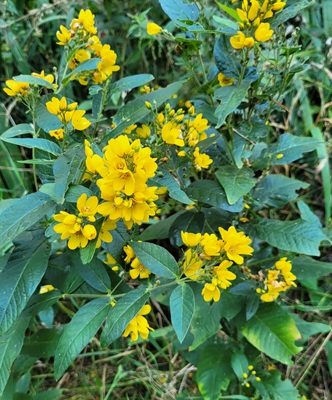Flower Properties
| Property | Value |
|---|---|
| English Name | Yellow Loosestrife |
| MainColor | Yellow |
| PlantType | |
| Growth Type | |
| Season | August |
| ImageUrl | Lysimachia-003 |
| Photographer | DP |
| Location | Tatton |
| Human Toxicity |
Flower Details
Description
Yellow Loosestrife is a perennial herb that can grow up to 1.2 metres tall, featuring tall spikes of bright yellow flowers that bloom from June to August. Its lance-shaped leaves are arranged oppositely along the stem, giving it a distinctive appearance.
Distribution
This plant is commonly found in damp meadows, riverbanks, and wetlands across Europe and parts of Asia. It thrives in moist, nutrient-rich soils and can often be seen in large colonies.
Medicinal/Other Uses

✅ Historically, Yellow Loosestrife has been used in traditional medicine for its anti-inflammatory and astringent properties. It has also been employed in herbal remedies for digestive issues and skin ailments.
Edibility

The young leaves and flowers of Yellow Loosestrife can be consumed in small quantities, often used in salads or as a herbal tea. However, they should be used with caution due to potential side effects.
Human Toxicity

Human toxicity: ingestion of large amounts may cause gastrointestinal discomfort.
Pet Toxicity

Mildly Toxic to dogs and cats - ingestion can lead to mild digestive upset.
Active Compounds
The plant contains flavonoids, tannins, and saponins, which contribute to its medicinal properties.
